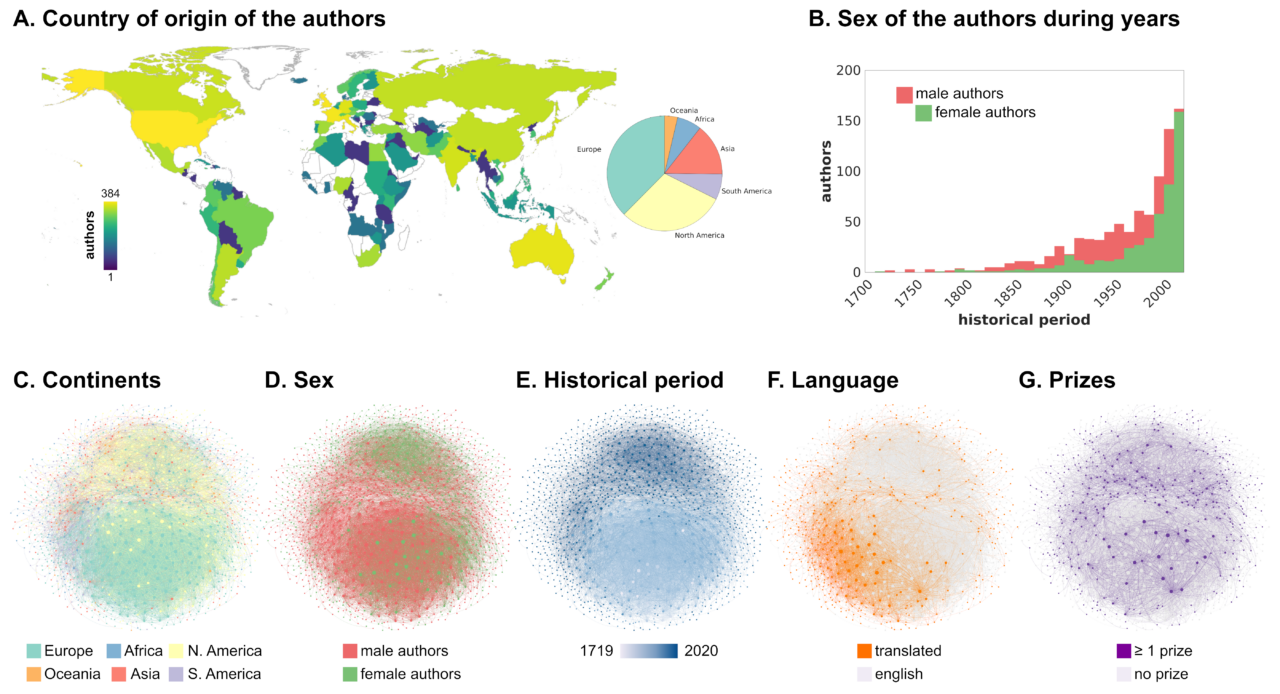
It is said that literature is the mirror of society: books speak - directly or indirectly - about the world in which they were written. So perhaps it is no surprise to discover that male and female writers have grown closer over the centuries with respect to their way of writing and narrating emotions. Much more surprising is to see this demonstrated, data in hand, by an impressive work that, thanks to artificial intelligence algorithms for natural language processing, has analysed thousands of books written over the last three hundred years. Giada Lettieri, a researcher in neuroscience at the IMT School, realised with colleagues from the MoMiLab a study of literature from the 18th century to the present day to identify any changes over time in how male and female authors experience and narrate emotions.
Many psychology and neuroscience studies have identified significant differences in the way men and women experience, recognise, express and react to emotions. Many of these differences have been attributed to 'biology'. But many other studies recognise that culture and society play an equally strong role. At the age of three, for example, girls and boys are already influenced by stereotypes concerning the way they express emotions. In several studies, it has been shown that male children perceive other male children as angrier than female children, who are instead seen as sadder. However, it is still a matter of debate how far gender differences are the result of stereotypes and social rules, and how far they are innate. Lettieri and his team set out to explore this terrain by analysing how authors from different eras and nationalities have written about emotions.
The first step of the research, the results of which were published in the journal Affective Science, was to create a huge database of literature - novels, short stories, autobiographies - published between 1719 and 2020, in English as the original language, or translated into English from other languages, from 116 countries around the world. In total, 2,281 books written by 1,365 authors were selected, of which 871 were male and 494 female. The books were identified from lists of writers who are considered 'classics', who have won major prizes, or who have received the Nobel Prize for Literature. The database contains authors and books that are considered the best of world fiction from the last three centuries. To give a few examples, we go from Marcel Proust to Bruce Chatwin, from Charles Dickens to Carlo Collodi, from Elsa Morante to Italo Calvino, and again Paolo Cognetti, Toni Morrison, Sophie Kinsella, Madeleine Miller, to mention modern-day authors.

Using modelling techniques for natural language processing, an analysis of the text was then carried out: words were categorised according to their properties, e.g. terms describing objects, social groups, or indicating times or places, and then their emotional valence was analysed. For example, 'chocolate' is rated as a word with a positive valence, as opposed to 'accident', a term associated with a more negative meaning. After this categorisation work, a subset of words was identified that, from previous research, show a significant difference in usage between the sexes or a significant change in valence over the historical period considered.
The analysis showed that while, up to the whole of the 20th century, more women than men wrote about emotions in all countries, since the 2000s this difference has narrowed considerably. "At the beginning of the period under consideration, women wrote more about positive emotions, while men talked about emotions in a way that in jargon is called 'activating', i.e. a state of psychophysiological arousal linked to physical preparation for action," Lettieri notes. 'Subsequently, and markedly since the 2000s, this difference has diminished considerably'. In fact, as the study found, works published in the present day score a very similar 5.33 for male and female writers. In short, men and women have come to write in a much more emotionally similar way than in the past.
"While it is true that novels reflect the condition of men and women in society, the observation that can be made is that women did not write in past eras about themes and events to which they did not have access, such as war; men, on the other hand, could not write about emotions because in society they were prevented from expressing and showing them. In confirmation of the fact that the progress of societies brings men and women closer together in terms of what they feel and express, writers have aligned themselves in the way they tell emotions on the page: one writes what one experiences.